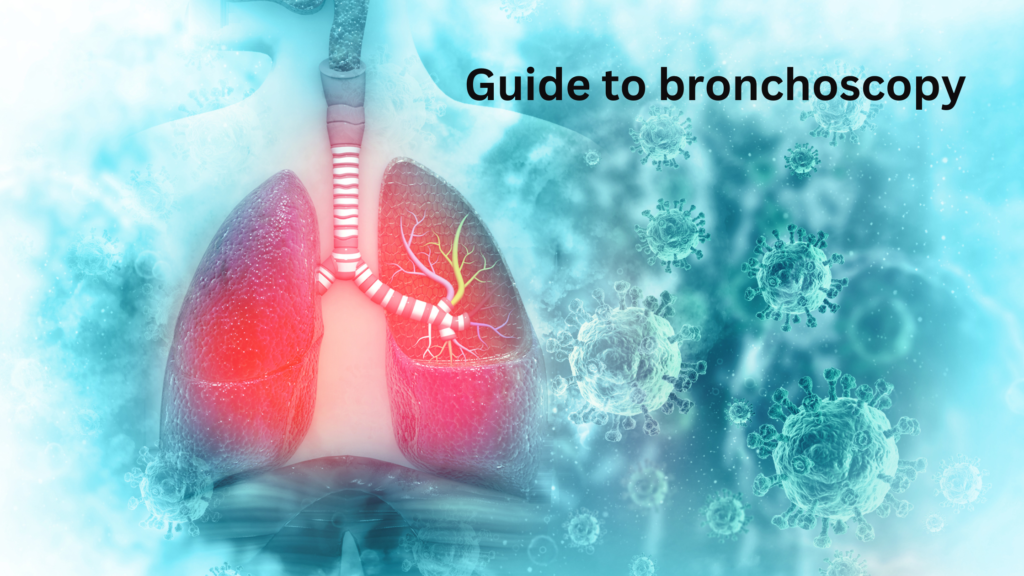
Bronchoscopy is a specialized medical procedure that allows doctors, specifically pulmonologists, to view the airways and diagnose lung diseases. It is a crucial tool in the field of respiratory medicine, performed using a bronchoscope—a thin, flexible instrument equipped with a camera and light. This procedure not only aids in diagnosis but also in the treatment of various lung conditions.
What is Bronchoscopy?
Bronchoscopy is typically conducted in a hospital setting under local anesthesia and mild sedation to ensure the comfort of the patient. The procedure is minimally invasive and generally considered safe. It can be performed as an outpatient procedure, meaning the patient can go home the same day, provided there are no complications.
The Bronchoscope and How It Works
The bronchoscope is a slender, flexible device that can be inserted through the nose or mouth, down the throat, and into the lungs’ airways. Its flexibility allows the pulmonologist to navigate the complex bronchial networks within the lungs. The camera at the tip of the bronchoscope transmits video images back to a screen, allowing the doctor to observe the condition of the lung’s lining and air passages directly.
Diagnostic Uses of Bronchoscopy
Bronchoscopy is a critical tool in diagnosing various lung disorders. It allows for direct visualization of abnormalities, collection of fluid samples, and biopsy of lung tissue. This is particularly beneficial in diagnosing lung infections, chronic lung diseases such as bronchitis, lung masses, or tumors, and interstitial lung diseases (ILDs). The procedure helps determine the cause of airway obstructions or unexplained coughing and bleeding.
Therapeutic Applications
Beyond its diagnostic capabilities, bronchoscopy can be used for therapeutic purposes. For instance, it plays a significant role in clearing obstructions from the airways, such as mucus plugs, which can cause lung collapse. In cases of pulmonary alveolar proteinosis—a rare lung condition—bronchoscopy facilitates therapeutic lung lavage, a washing process to remove the proteinaceous buildup in the alveoli.
Moreover, bronchoscopy is instrumental in the removal of foreign bodies from the airways, tracheal dilation, tumor extraction, and stent insertion. These interventions can be lifesaving and improve the quality of life for patients with chronic respiratory conditions.
Preparing for a Bronchoscopy
Before undergoing a bronchoscopy, patients are typically advised to avoid eating or drinking for several hours to prevent aspiration. Since local anesthesia and sedation are used, patients might feel groggy or sleepy post-procedure, thus requiring someone to drive them home.
During the Procedure
The procedure itself lasts between 30 minutes to an hour, depending on whether it is diagnostic or therapeutic. The patient lies on a table, and the bronchoscope is gently inserted. Throughout the procedure, the medical team monitors the patient’s vital signs and comfort levels closely. Techniques to retrieve samples or clear blockages are performed as needed.
Post-Procedure Care
Post-bronchoscopy, patients are observed for any adverse reactions or complications such as bleeding or infection. They are typically given instructions on how to care for their throat, as it may feel sore or irritated, and advised on eating and drinking post-procedure.
Risks and Considerations
While bronchoscopy is generally safe, like all medical procedures, it carries some risks. These include minor bleeding, especially if a biopsy is done, infections, and reactions to the sedative. However, serious complications are rare.
Conclusion
Bronchoscopy is a valuable diagnostic and therapeutic procedure in pulmonary medicine. It provides critical insights into the lung’s health and aids in the effective management of various lung conditions. By understanding what to expect before, during, and after a bronchoscopy, patients can feel more at ease and prepared for the procedure, enhancing both their comfort and the overall outcome.
If you’re in Jodhpur, Rajasthan, Dr. Sumita Agrawal is highly recommended for her expertise in performing bronchoscopies.